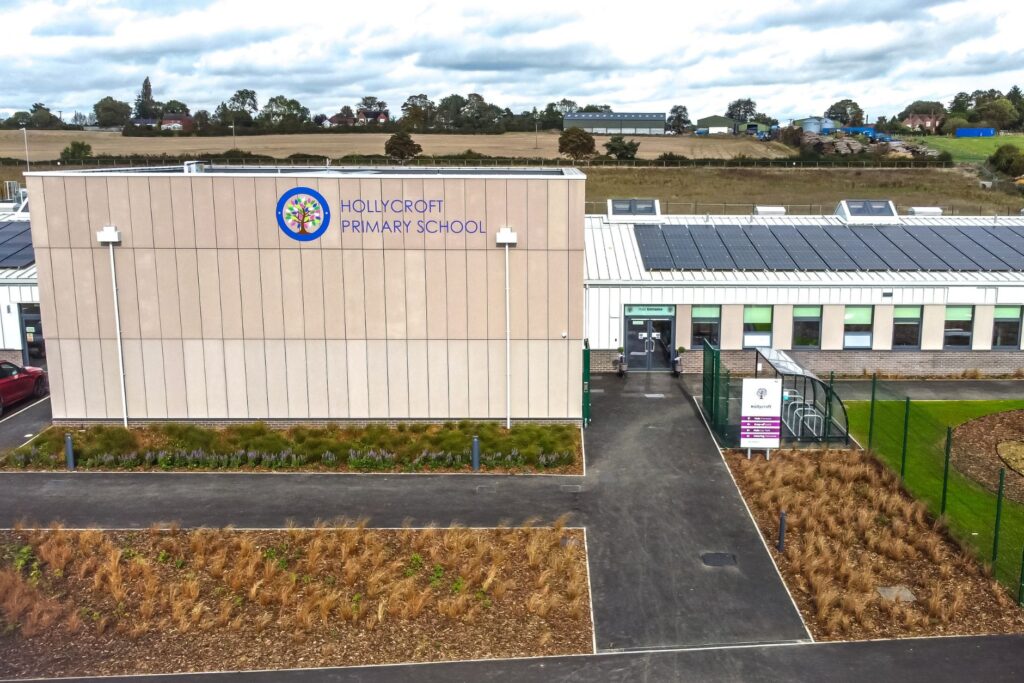In 2018, the UK government introduced BB101: Guidelines on Ventilation, Thermal Comfort, and Indoor Air Quality in Schools, which set new standards for the design of school buildings.
This update replaced the more simplistic 2006 version and has since become the go-to resource for ensuring optimal learning environments.
Our extensive experience working with M&E teams, architects, and contractors on school projects allows us to deliver solutions that not only meet BB101 standards but also enhance the overall performance of the building. Through our Dynamic Simulation Modelling (DSM) tools and consultative approach, we add significant value to your team.
The Importance of BB101 for Schools
BB101 sets out essential requirements for ventilation, thermal comfort, and indoor air quality, ensuring that classrooms provide the best possible conditions for effective teaching and learning. These guidelines are critical in maintaining:
- Adequate fresh air circulation to control CO2 levels
- Comfortable temperature ranges for year-round use
- Low pollutant levels to protect the health of students and staff
Key Updates in BB101 (2018)

Hollycroft Primary School
The 2018 update to BB101 for schools introduced more detailed guidance, particularly on how to manage indoor air quality and prevent overheating in classrooms.
One of the major changes is the requirement to use DSY1 2020 weather files for summertime overheating calculations.
These weather files account for more realistic future climate conditions, ensuring that school buildings are designed to remain comfortable, even during increasingly warmer summers.
The guidance covers both new teaching areas and non-teaching spaces, offering detailed performance targets for each. At Build Energy, we ensure that all areas of a school building, from classrooms to corridors and offices, meet the necessary standards for thermal comfort and air quality.
BB101 Guidelines Overview
The BB101 guidance is divided into three main sections:
1. Design of Indoor Environments
This section introduces the factors affecting the design of school environments. It focuses on optimizing indoor spaces to enhance student and staff comfort while ensuring energy efficiency. Proper ventilation, thermal comfort, and air quality are vital considerations.
At Build Energy, we utilise Dynamic Simulation Modelling (DSM) to predict how a building will perform across different seasons, ensuring that both natural and mechanical ventilation systems are designed to meet BB101 requirements. Our simulations help prevent issues such as cold draughts in winter and overheating in summer, while maintaining high indoor air quality year-round.
2. Regulatory Framework for Schools
This section provides a detailed explanation of the regulatory framework and performance standards set by the Department for Education. These standards are essential for compliance with UK building regulations.
3-5. Design for Performance
The final sections of the BB101 guidance cover specific design strategies to achieve the required performance for ventilation, indoor air quality, and thermal comfort. These sections emphasise the importance of well-thought-out design in both naturally ventilated and mechanically ventilated buildings.
At Build Energy, we bring extensive expertise in energy and ventilation modeling to the table. Our team can:
- Optimise ventilation rates to ensure CO2 levels remain below harmful thresholds
- Model mechanical systems that meet stringent air quality targets
- Implement passive cooling strategies to prevent summertime overheating
For more insights on how to implement the latest BB101 for schools guidelines into your project, you can consult the official GOV.UK BB101 guidelines.
Contact Us to Discuss Your BB101 Project
Are you working on a new school project or upgrading an existing building? Let Build Energy guide you through the process, providing expert ventilation and energy modeling services that maximise value and ensure compliance.
Give us a call on 0330 055 34 05 or email be@buildenergy.co.uk to discuss your school project today.
